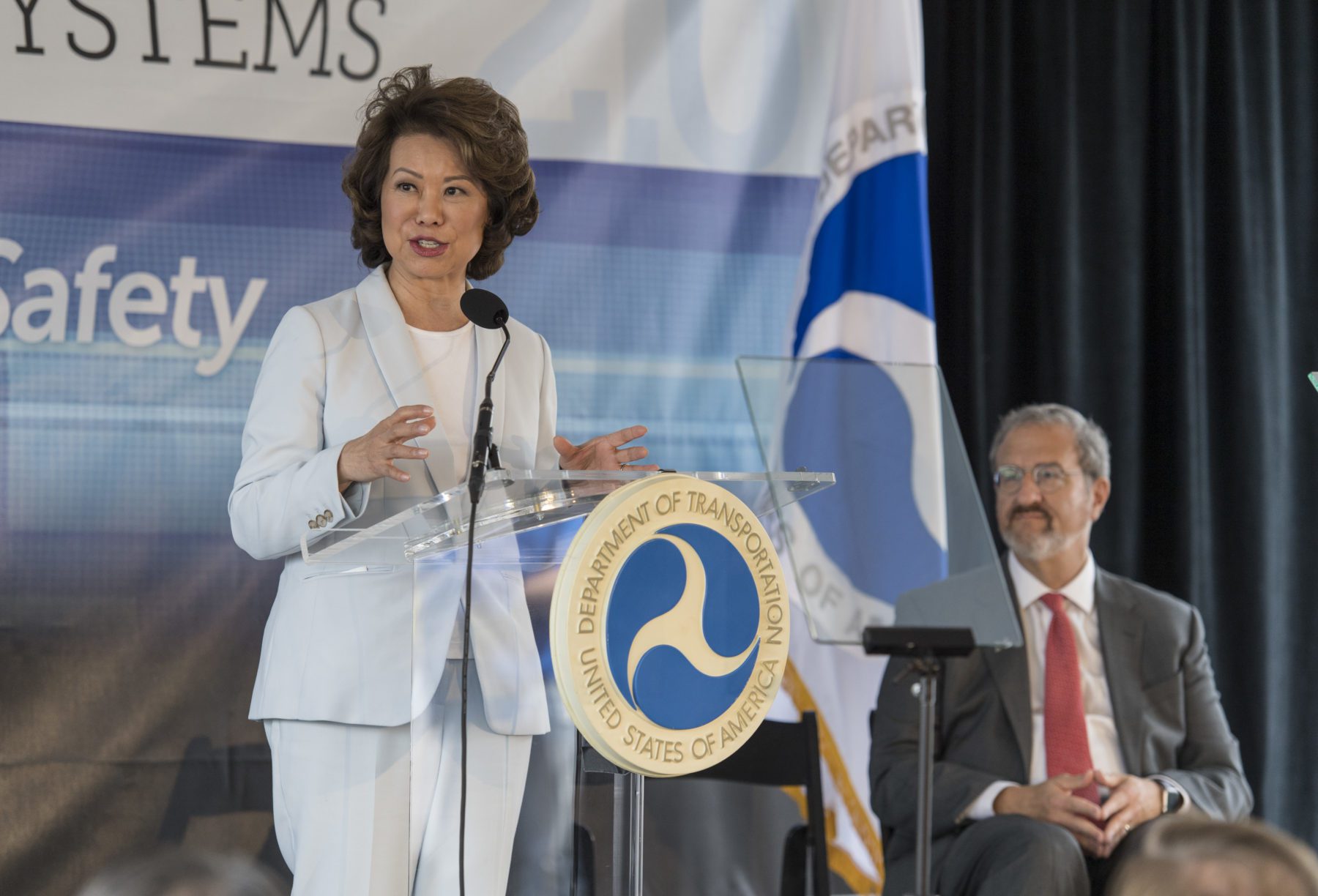New federal guidance on automated vehicles issued at Mcity

By Nicole Casal Moore
At the nation’s leading test site for connected and automated vehicles today, the federal government released new guidance for industry and state governments on automated driving systems.
U.S. Transportation Secretary Elaine Chao announced the new non-regulatory guidelines at the University of Michigan’s Mcity Test Facility, a 32-acre site where industry and academic researchers collaborate to advance mobility.
The new “A Vision for Safety 2.0,” which replaces last year’s Federal Automated Vehicle Policy, is intended to improve safety, mobility and efficiency through self-driving vehicles, and to facilitate the safe deployment of these vehicles.
“A Vision for Safety 2.0 is an important step forward, and will help to guide and accelerate the development and testing of self-driving vehicles,” said Huei Peng, director of Mcity and the Roger L. McCarthy Professor of Mechanical Engineering at U-M.
Key aspects of the A Vision for Safety 2.0 include:
- Twelve priority safety design elements for the automotive industry and other stakeholders to consider, including vehicle cybersecurity, human machine interface, crashworthiness, consumer education and training, and post-crash automated vehicle behavior.
- Technical assistance to states and best practices for state legislatures regarding automated driving systems. This includes clarification of federal and state roles in the regulation of automated driving systems.
- Information on best practices for state highway safety officials, including a framework for states to develop procedures and conditions for automated driving systems’ safe operation on public roadways. This includes considerations such as applications and permissions to test, registration and titling, working with public safety officials, and liability and insurance.
- An encouragement for entities engaged in testing and deployment to publicly disclose voluntary safety self-assessments of their systems to demonstrate their varied approaches to achieving safety.
“The new guidance supports further development of this important new technology, which has the potential to change the way we travel and how we deliver goods and services,” Chao told an audience of about 150, including representatives from industry and government.
Jim Sayer, director of the U-M Transportation Research Institute (UMTRI), said traffic deaths and injuries have been rising in recent years, and adoption of automated vehicles and technologies will help save lives. “These technologies will also cut fuel use and emissions, and bring mobility to those who cannot easily access transportation today,” Sayer said.
The backdrop of the announcement—the Mcity Test Facility—is a central piece of the regional ecosystem that prompted the New York Times to call Ann Arbor “Michigan’s New Motor City” in July. Mcity is a U-M-led public-private partnership that has grown to more than 65 industry members since it launched in 2015. It currently funds $16 million in research projects. And in partnership with UMTRI, Mcity has deployed 1,500 connected vehicles on the roads of Ann Arbor and southeast Michigan—the largest vehicle-to-vehicle, or V2V, test fleet in the United States. This fall, it will begin operating the first Level-4 driverless shuttles on public roads in the nation.
“The total investment at Mcity and UMTRI in these cutting-edge connected and automated vehicle research, development and deployment activities will exceed $100 million before 2020, with funding from the University of Michigan, government agencies and our industrial members,” Peng said.
All this is occurring a short distance from the American Center for Mobility (ACM) in Ypsilanti. AMC is a nonprofit joint initiative with the State of Michigan and several other entities. While Mcity enables early stage research, ACM will host later stage product development.
“Mcity, along with the nearby American Center for Mobility, are outstanding examples of university research—University of Michigan research—at its best,” said U-M President Mark Schlissel. “At Michigan, working with our partners in government and industry, we are driving the future of mobility toward a society that is safer, more sustainable, and economically powerful for our state and nation.”